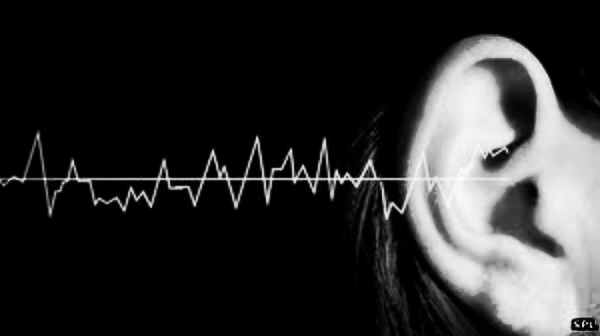Here's the full text of a very generous and thoughtful review of Ultrasonic from American Book Review
Sound off
From American Book Review
By Lindsay Marshall
There are bodies in Ultrasonic: Essays, and lots of them. In Steven Church’s latest collection of essays, we encounter the bodies of babies and loitering teenagers and catfish, of elderly neighbors and younger brothers and miners trapped underground. Elvis’s body even makes an appearance, sweating through a final game of racquetball on the night of his death. One important thread links all of these very different bodies, pulling them together through variations in language and time and eventually bringing them into the same orbit: sound. Sound is something we probably don’t think about enough—or at least not deeply enough. We think about music, about our favorite songs, and the memories they bring to the surface. We think about the most conspicuous sounds, ones that signal danger (the scream of an ambulance) or happiness (a loud and genuine laugh), or that mark time in our day-to-day lives (alarm clocks, school-bells, buzzers). But how often do we really think about other sounds, the subtler ones we rarely notice and have maybe even stopped hearing? These are the sounds Steven Church is most interested in: the sounds that loneliness and grief and happiness make, and the sounds they ultimately make inside of us.
In many ways, Ultrasonic functions like a mixtape—a yoking together of connotations, thoughts, and emotions that stem from the instincts of the maker. In the old world of cassette mixtapes, there was fairly little room for error. You had to choose your playlist carefully, time the pausing of the tape deck just right, and make sure the songs you’d chosen would fit on one side of the cassette without cutting off mid-verse or leaving too much dead space between songs. You might base the decision to transition from one song to the next, from Eazy-E to Blondie, on any number of criteria: on the way one song sounded in relation to the next, or on the personal associations connected to each. No matter how offhandedly constructed it appeared to be, there was always some rationale to a mixtape, a series of links you hoped the listener (or even you, yourself, later) would recognize. And, as with any mix, the arrangement in Ultrasonic follows a particular— and in this case—a particularly interesting trajectory.
Church begins the essay “Seven Fathoms Down” by thinking through the definitions of the word “cockle.” Cockles are both muscles and mussels; they are both movement and sound. In the most familiar sense, cockles are what get warmed in the heart, but “A cockle is also a bivalve mussel, a shellfish with a heart-shaped shell. And, to cockle means to pucker or gather into folds. When you give someone a kiss, you cockle your lips. When your baby daughter reaches out her tiny hand and gathers up your shirt in her fist, she’s cockling the fabric. And when a wave breaks on a beach, you hear it cockling on the sand like a whisper.” The exploration of these definitions is interesting enough, but what is more intriguing is how Church shifts deftly from the semantics of cockles to a brief yet broader rumination on the relationship between sight and sound:
We see with sound when we are functionally blind or when light cannot penetrate the place we’re looking, when we need to see in the dark or beneath of the surface of something vast and impenetrable. We use sound to see under skin, bone, muscle, and tissue, beneath the earth’s crust on the surface of a planet, or to extend our vision deep into a body of water.
He then moves into a beautiful—and terrifying—discussion of catfish, specifically the practice of “noodling” for these “dumb, wet, and malevolent” creatures, who fishermen dive underwater to catch with their hands, searching around in the muddy darkness for the fish’s slick body.
The links between cockles and catfish and sound might not be immediately apparent, but Church manages to present the connections he draws in a way that feels both organic and elegant.
Ultrasonic’s first essay, “Auscultation,” is just over eight pages long, yet it effectively sets up the ideas Church returns to throughout the book: death and the fear of abnormality, our tenuous but precious connections to other human beings, and the investigative histories of words or objects in the world. (In the case of “Auscultation,” we examine the stethoscope). As Church puts it in the notes section at the close of his book, “If the moves in the essay don’t make obvious sense at first, I wanted them to at least sound right.” And in the end they do, which is no easy feat. Ultrasonic contains a broad range of topics, from the appeal of rap music during pregnancy to the use of white noise machines, from musical performances in Madrid’s El Parque del Buen Retiro to the frailty of an elderly neighbor. Despite this range, however, Church manages to avoid the trap of dilettantism: all of the essays in Ultrasonic that require historical inquiry feel thoroughly and affectionately researched, and all the moments that don’t require formal research—those which draw on significant moments in Church’s own life, such as the sudden death of his brother—manage to strike an effective balance between tenderness and bitterness. The moves Church makes “sound right” because they feel (and are) part of a larger network—a series of stories, memories, ideas, and language games whose careful connections sneak up on you.
Lindsay Marshall lives and teaches in Chicago. She is a PhD Candidate in the Department of English at University of Illinois at Chicago
